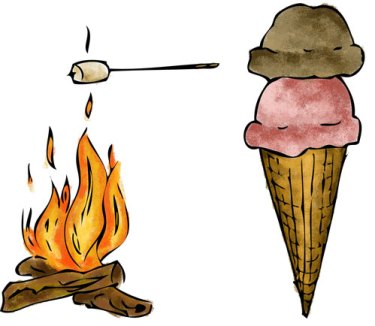
What it is: A really simple hide-and-seek type game. It’s a good kind of quiet, not-too-disruptive game for little kids. We used to play in primary (Sunday church class for little kids).
Best for: 5 to 10 players.
What you need: You’ll need something to hide, but this can be anything: a toy or stuffed animal, a piece of paper, a trinket. For a harder game, pick a smaller item. For an easier game (or for really young kids), pick a bigger item.
You’ll also need somewhere to play. This game is ideal indoors, like in a living room where there are lots of places to hide the object. You could also play in another enclosed area, even a backyard.
How to play: Let’s say you’re playing with a small group of young kids, and the object you’re hiding is a bouncy ball. First, choose someone, like Joe, to leave the room. Then choose another person in the room, like Kylie, to hide the bouncy ball. Make sure everyone sees where it’s hidden.
Then call Joe back into the room. He tries to find the bouncy ball, and everyone else gives him hints. The hints work like this: as Joe gets closer to the bouncy ball, everyone says, “warmer…” As he gets further away, everyone says, “colder…” You can use other temperature-describing words, too, like lukewarm, ice cold, burning hot, etc. The closer Joe gets, the hotter the temperature gets. The further he gets, the colder it gets. (The clues can also get more frantic as Joe gets closer and is about to find it: “You’re cool…getting warmer…warmer…okay, really warm! Ooh, hot! Hot, hot! Ooh, on fire! You’ve got it!”
Then once Joe successfully finds the object, it can be his turn to hide it while someone else leaves the room. 🙂
Strategies: It’s pretty fun to hide the object in creative places you wouldn’t expect. Ooh, the best is somehow on a ceiling fan because then someone could be in the middle of the room getting clues, “hot! hot!” and there won’t be anything nearby, haha!
Variations: There are tons of variations to this game. If you’re playing with a pretty small group, you could even have all the players leave the room while one person (like the adult) hides the object and gives the clues. And, though hot and cold words make good clues, you could use other clues, too. When we played in primary, the teacher would use the game as a way to get us to practice our primary songs. One person would leave, and the rest of us would sing to let him know if he was close or far. When we sang loud, he was close. When we sang quietly, he was far. (Our teacher helped us know when to sing loud or soft.) You could do the same thing with music played on speakers, if you wanted.
When my sisters and I were really little, we loooved playing this game with our uncle Jason, but we called it “where’s rabby?” because the hidden object was a little stuffed toy rabbit. My sisters and I would leave the room, my uncle would hide the rabbit, and we’d have a ball coming in and trying to find it with the help of his clues.
This is a cool game